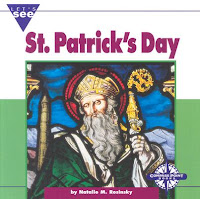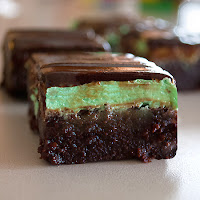Over at Creating My Way to Success, Jill interviewed me about what I create and my definition of success. I’ve included my interview below if you’d like to read it.
After you’re done at Harvest Moon by Hand’s blog, I’d like to encourage you to visit Creating My Way to Success. I originally found out about Jill’s blog through her weekly “Round Tuit” post. She features inspiring work made by several people each week, and then anyone can link a project they’ve completed (craft, cooking, or anything creative).
As Jill says, “…maybe it’s a project you’ve completed that you’re proud of – something you have wanted to get done for a while and need some extra motivation to get going on it – or you’d just like some of that fabulous encouragement, praise, and motivation that bloggers are so good at spreading around.”
She also has a section on her blog for clothes upcyling projects which over 100 people submitted projects to – including photos and tutorials. It’s an excellent resource if you want to find a new purpose for old clothes…and make a positive difference on the environment.
After my interview, there’s a link for you to include your blog. By visiting and following one another’s blogs, we spread the word about all the creativity out there…and countless inspiring ideas!
Here’s my interview with Jill (Jill’s questions are in bold type; my answers are in regular type):
What do you create?
When I think of what I create, I divide the items into three different groups: things that I sell, share, or support.
SELLING
My main way of selling some of the things that I create is through my shop on Etsy, Harvest Moon by Hand. My goal is to help people enhance their homes by offering natural products which are calming and uplifting; and inspire creative and imaginative play in children.
Window stars that are available at
I do this by:
– Creating handcrafted items made of natural, quality materials.
Hand-poured beeswax impression
– Creating imagination-inspired, eco-conscious items from materials that would normally be recycled thereby lessening the impact on the environment.
Handmade bears with miniature bunting
made from a felted wool sweater.
SHARING
Another way that I create is sharing ideas through writing. My blog, also named Harvest Moon by Hand, focuses on a variety of subjects, and gives readers a “behind-the-scenes” of what life is like at Harvest Moon and what provides the inspiration for its products.
Set of needlefelted alphabet cards that I made
to help my daughters learn their letters
and corresponding sounds.
The wool cards also can be used for spelling words.
Some of the topics I tend to write more about on my blog include: art, education, embroidery, family traditions, food/recipes, holidays, homeschooling, nature, reading, and sewing.
Hand-embroidered journal quilt I made during 2010.
This quilt is one of twelve that were made monthly for a year.
More information about the journal quilts and
SUPPORTING
A third way that I create is by supporting my family by making or doing things for personal or family use. Some of the ways that I create on a day-to-day basis for my family are by:
– Making healthy meals and trying new recipes;
– Creating family traditions; and making good memories that the girls can look back on when they are older;
– Developing a personalized curriculum for each of my daughters based on their educational needs;
– Sewing clothes or quilts;
– Making sensory items and a memory quilt for my dad who has Alzheimer’s Disease;
– Making hand-embroidered toys; and
– Crocheting blankets.
I helped Sophia make sugar cookies one afternoon
after reading a book about a girl who made cookies.
She formed the dough into letters,
spelling the words “Family” and “Love.”
Why do you create?
That’s a good question. In some ways, I think that asking me why I create is like asking me “Why do you breathe?” or “Why do you eat?” Both breathing and eating are necessary to sustain life.
I consider creating and creative expression – whether it’s a product, a memory, something to eat, a lesson plan, or playing a song on the piano – ways to sustain and enhance others’ lives as well as my own.
Do you sell your creations? If so, how? Where?
I sell some of the items that I create through my shop (Harvest Moon by Hand) on Etsy. What I enjoy about having a presence on the internet is that my work has been purchased by individuals and businesses throughout the world – including many states in the United States, Canada, Brazil, several countries in Europe, Australia, and Japan.
Pattern for a hand-embroidered activity book
An equally important part of running a business is giving back to the community. A couple of years ago, a local church asked me to make window stars for their fellowship hall/welcoming area. I donated about 20 stars that they displayed in the windows around their Christmas tree.
One of the windows at a local church
where I donated some stars for
their Christmas display.
I also have made window stars, hand-embroidered ornaments, and other handmade items as “thank you” gifts for those who have made an impact on my life and who have indicated that they like the work that I do. Sharing an item that I made by hand with someone who will appreciate it is something I enjoy doing.
What mistakes have you made or lessons you have learned?
I’ve made plenty of mistakes in trying to run a business. I do not have a business degree (my undergraduate degrees are in Psychology and in Communications, Telecommunications, and Theater; and I did some graduate work in Arts Administration), so I’m not as skilled as others who have a strong business background. I’m learning as I go; and having Harvest Moon by Hand has taught me a lot about different aspects of operating a business from home.
Children learning taiko drumming from
a Theater Mu performer.
This picture was taken during one of the
Create & Cultivate Art Camps
that I founded and directed right at the farm for many years.
One of the most important lessons, for me, is not to give up. I’ve tried lots of different ways to be self-sufficient by running my own business or non-profit organization. Some things were very successful (not neccessarily monetarily, but in terms of positive impact on others)…and others failed miserably on all levels.
Campers petting one of the sheep at Harvest Moon.
The camp program drew children from a 50-mile radius;
and featured hands-on opportunities to learn
the connection between agriculture, the arts, and nature.
When faced with failure (or multiple, repeated failures as was the case many years ago when several things failed all within a few years of one another) life can get pretty discouraging. I’ve had to step back at these times and objectively look at what was successful and what didn’t work, and come up with another idea, hoping that the new one would be the one that works well.
What, to you is success? Have you achieved it yet, or are you on your way towards success?
To me, success isn’t related exclusively to money….it’s related to giving. There are some core questions that are always in the back of my mind that guide how I view and work towards success:
– What are you doing to make a difference in the world? In your community? In your family?
– How are you making the lives of others who are having difficulty (or who have less than you do) easier?
– How are you enhancing the lives of the next generation? (These children are the ones who will be in charge when you are older…in business, government, and healthcare. Helping children now benefits everyone in the long-term.)
I know this is a very different view than some other people have regarding success. Traditionally, success is equated with how much money you make and accumulate; how big a house you have; or how many “toys” you own. Simply having lots of money and not using it to help others, to me, is not success.
My dream would be to have an even more profitable business – so that I could give more. When I look at the opportunities to help…to make a difference…it would be nice to be able to have the financial resources to make gifts to others or travel to places to volunteer (beyond just donating items or time which my daughters and I do now on a weekly basis to various organizations).
So what’s next?
I enjoy developing patterns, and would like to create more PDF patterns for natural, hand-embroidered children’s toys.
PDF pattern for a hand-embroidered zebra
I also did a 52 Weeks of Baking challenge in which I tried new recipes each week for a year. I modified the recipes so that they were dairy-free (so my oldest daughter could eat the food). I typed each of the recipes along with modifications made, a photo of the recipe, and lessons learned during the week.
My next step is to format the recipes into a book and print two copies – one for each of my daughters. I’ve considered making some extra copies and trying to sell them since appetizing, dairy-free recipes for children aren’t always easy to find.
Sourdough cinnamon rolls that I made during
the 52 Weeks of Baking challenge.
They were incredibly good…and dairy-free!
Many years ago, I wrote a multi-disciplinary curriculum for families who homeschool that was based on creative reuse (it was called “Waste Not” and “Second Impressions”). My daughters at the time were not old enough to do many of the activities over the ten-month period that I piloted the curriculum and activities to a local homeschool co-op.
Handmade pillowcase made from
a used (and cleaned) bedsheet and extra fabric.
So, I would like to revisit the curriculum, do the activities with the girls, and re-format the curriculum with pictures of the activities that my daughters enjoyed the most. The photos of the projects, tutorials, and information would be available in PDF format through my shop.
Felted sweaters that were cut and
made into cat toys.
Read Full Post »
 …is for Painting.
…is for Painting.








































































